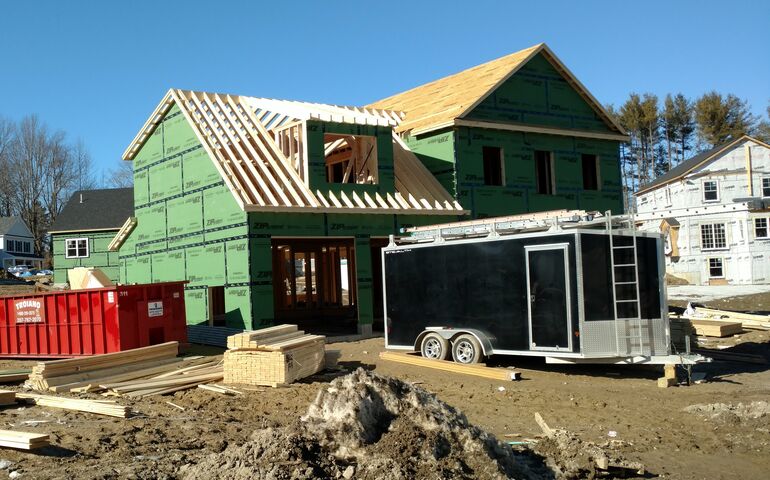In Portland, building permits surge under old affordable-housing rule
 File photo
Home building is up in Portland, but hasn't yet felt the impact of a new affordable-housing requirement.
File photo
Home building is up in Portland, but hasn't yet felt the impact of a new affordable-housing requirement.
Portland’s permit approvals for new residential buildings have more than doubled in number this year, but few of the developments reflect stricter laws designed to increase affordable housing in the city.
So far this year, 853 residential units have been approved, a 149% percent increase from the full year 2020 and a 72% jump from 2019, according to Christine Grimando, Portland’s director of planning and urban development.
Most of those projects, however, were already on the Planning Board books and had started some aspect of development before the new laws took effect. The only project that has been approved by the board under the new restrictions was the 48-unit Winchester Woods development in East Deering, she said.
“So much of what we’re reviewing has had momentum going into this year already,” Grimando said. “Next year will be much more telling about the pace.
“This was a banner year for housing approvals. But so many of these had pending proceedings before the referendum. So many of these projects take a long time to pull together and this year we had a convergence of a lot of really big projects.”
Grimando said she believes 2022 will be a better gauge of whether the new rules have an effect on development.
Under the Green New Deal ordinance passed by voters a year ago, the percentage of units in certain developments that must remain affordable to middle-income families increased from 10% to 25%.
The new rules also reduced the benchmark that determined “affordability” from incomes equaling 100% of the area median income to 80%. The AMI is currently $70,630 for one person and $100,900 for a family of four.
The developer of Winchester Woods, Yarmouth-based Kevin O’Rourke, said he was able to keep costs down on the project by acquiring the land at a low price and developing it under a Planned Residential Unit Development provision, which gave him a 25% density bonus. He estimates the project cost at $7 million to $8 million.
By being able to build more units on the site, he was able to meet the 25% threshold of affordability for the city. Without the PRUD distinction, the project might not be possible, he said.
Other developers agreed that the new affordability rules make development financially more difficult.
“For new construction, I agree, you’re unable to build new units without a subsidy,” said Jonathan Culley, managing partner of Redfern Properties.
Redfern is developing an 18-story apartment tower in Portland, at 201 Federal St. The building, which is set to be Maine’s tallest upon completion, received final Planning Board approval this year. But the project was in the planning phase before the new laws were enacted and so was not subject to the stricter affordability rules.
Meanwhile, developer Tom Watson said the Green New Deal may seem like a good idea to voters, but will only worsen the housing crunch in the city over the long term.
“Initiatives passed that have the effect of no one moving ahead with multifamily projects,” said Watson. “The people who voted on it might think it’s a nice idea. But you need housing and there’s nothing new in the pipeline. The city just passed measures that arguably exacerbated the problem it already had. But maybe some of the electorate wants less development?”










0 Comments